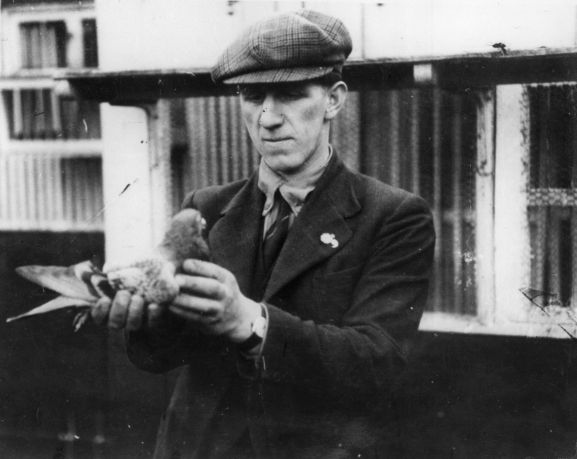Sometimes known as the ‘animal’s Victoria Cross’, the Dickin Medal was instituted in 1943 by Maria Dickin, founder of UK veterinary charity People’s Dispensary for Sick Animals (PDSA). The medal recognises outstanding acts of bravery or devotion to duty shown by animals serving with military or civil defence units in the theatre of war. 34 dogs have been awarded the medal, as have 32 pigeons, four horses and a cat. An honorary award in 2014 recognised all the animals that served in World War One.
The first recipients of the Dickin Medal were three pigeons named Winkie, George (also known as Tyke) and White Vision. Homing pigeons were widely used as messenger carriers by the armed and civil services during World War Two, with many seconded into service from private racers and fanciers. Bombers and reconnaissance aircraft carried their pigeons in special watertight canisters, enabling a message to be sent if the aircraft had to ditch. Many of the pigeons faced long flights to get home – often under difficult conditions, and success was never certain.

George was a messenger pigeon on an American Martin Baltimore Bomber piloted by New Zealander Flight Lieutenant Norman Crompton. When the crew ditched their aircraft in the sea off the coast of Libya in 1943, things looked bleak. Four men sharing two small inflatable life rafts bobbed around in high seas, with no food or water, or way of signalling rescuers.

George was a messenger pigeon on an American Martin Baltimore Bomber piloted by New Zealander Flight Lieutenant Norman Crompton. When the crew ditched their aircraft in the sea off the coast of Libya in 1943, things looked bleak. Four men sharing two small inflatable life rafts bobbed around in high seas, with no food or water, or way of signalling rescuers.
George, although covered in oil and soaked with water, had survived in his canister. Norman and his crew cleaned up George as much as possible and attached a message to his leg giving their location. George was still a bit worse for wear, however, and his first attempt at taking off was aborted when he plopped straight back into the sea and had to be rescued. The crew let him dry out in the sun for a while before trying again. This time, George made it into the air and flew away to cheers from the four men.
George was later discovered in the local Royal Air Force (RAF) pigeon loft over 100 miles away with the hastily scribbled message, and the Royal Navy were dispatched to pick up the downed airmen.
This was the first time in World War Two that a pigeon had saved the lives of RAF airmen in the Mediterranean Sea.
George, Winkie and White Vision received their awards from Maria Dickin on 2 December 1943.





